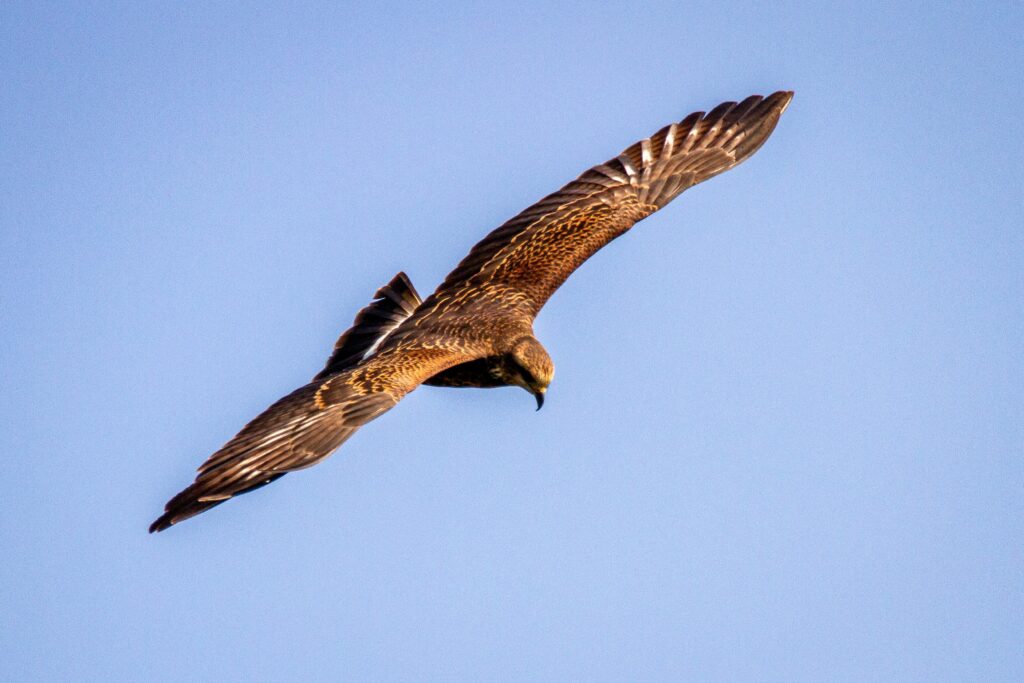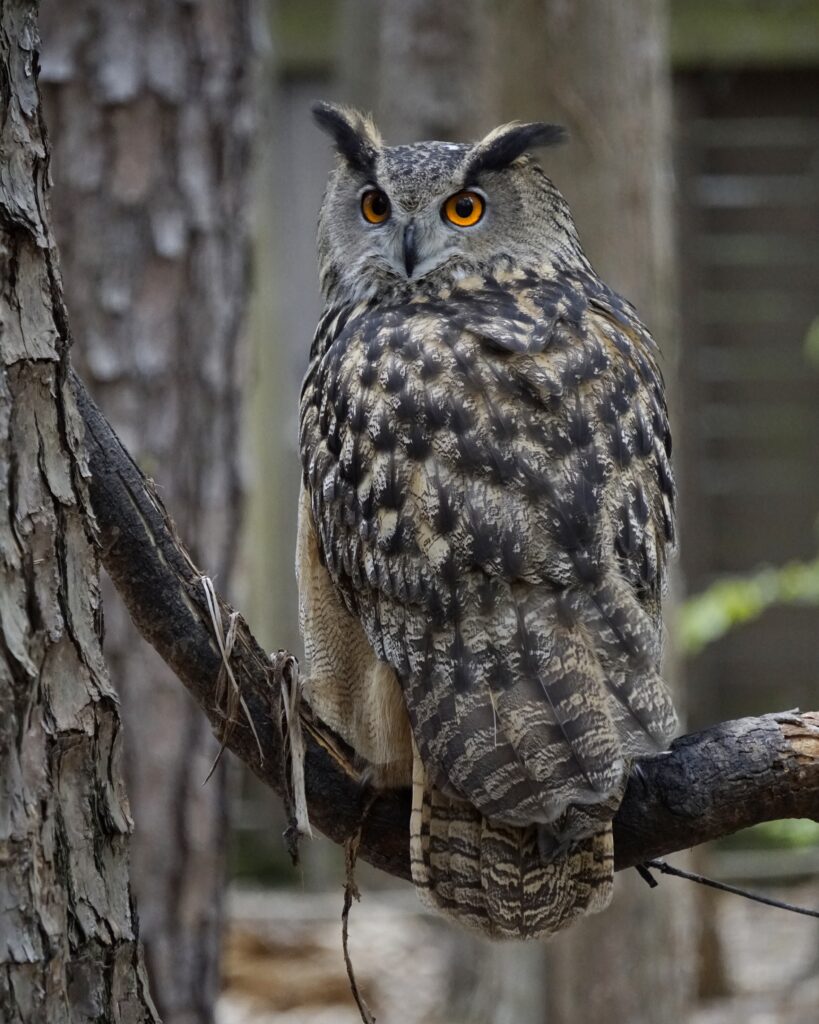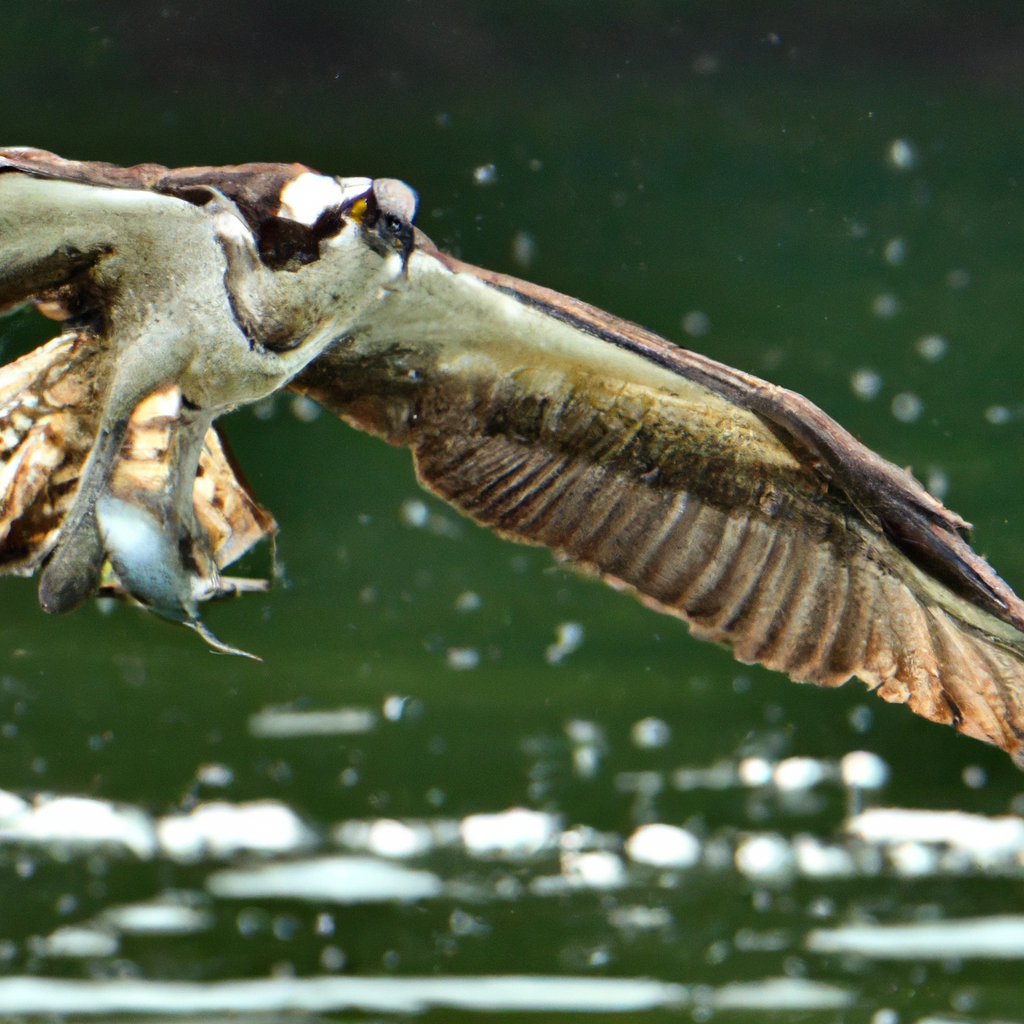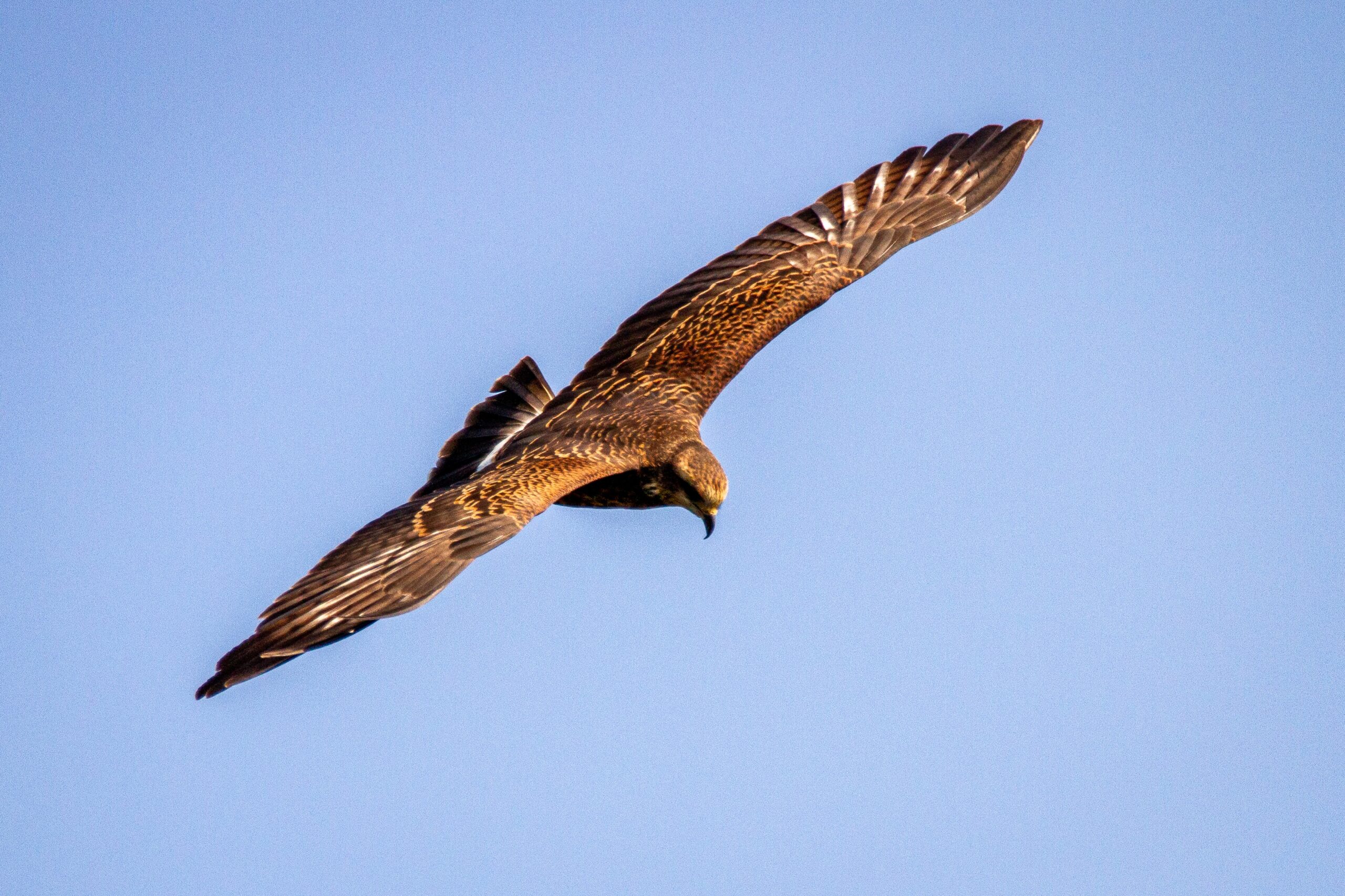The Osprey, scientifically known as Pandion Haliaetus, is a majestic bird of prey that is widely known for its exceptional hunting capabilities and distinctive appearance. With a wingspan reaching up to six feet, this magnificent creature is easily recognizable by its white chest and belly, contrasting sharply with its dark brown wings and back. Equipped with unique adaptations, such as reversible outer toes and sharp, curved talons, the Osprey is a formidable hunter adept at catching fish with exceptional precision. Expertly navigating the skies, this bird proves to be a true marvel of nature.

This image is property of images.unsplash.com.
Physical Description
Size
The osprey is a large bird of prey, with an average body length ranging from 20 to 24 inches. In terms of weight, females are usually larger than males, weighing between 3.1 to 4.4 pounds, while males typically weigh between 2.0 to 3.6 pounds.
Wingspan
One of the most distinctive features of the osprey is its impressive wingspan. With a wingspan that can reach up to 5 to 6 feet, the osprey has the ability to soar gracefully through the skies and cover long distances during its hunting expeditions.
Coloration
The osprey exhibits a unique coloration that sets it apart from other birds of prey. Its upperparts are predominantly dark brown, while its underparts are white. This stark contrast in colors makes the osprey easily recognizable, especially when it is in flight.
Feathers
The feathers of the osprey play a crucial role in its successful hunting and survival. The outer feathers are designed to be smooth and provide aerodynamic efficiency, allowing the bird to fly swiftly through the air. Additionally, the osprey has special feathers called powder-down feathers, which help to clean and waterproof its plumage.
Beak
The osprey possesses a sharp and hooked beak that is specially adapted for catching and feeding on fish, its primary source of food. The beak is used to tear apart the flesh of its prey, making it an efficient tool for consumption.
Eyes
The osprey has excellent eyesight, which is essential for spotting prey from high above the water’s surface. Its eyes are golden-yellow in color, and their position on the front of the head provides excellent binocular vision, enabling the osprey to accurately gauge distances while hunting.
Habitat
Coastal Areas
The osprey is commonly found near coastal areas, where it can easily access its primary food source – fish. It is often observed nesting on tall structures, such as cliffs or man-made platforms, near the coast.
Lakes
In addition to coastal areas, ospreys can also be found near lakes. These bodies of water provide an abundant source of fish, making them an ideal habitat for these birds of prey.
Rivers
Rivers with healthy fish populations are another favored habitat for the osprey. These birds take advantage of the availability of various fish species that thrive in freshwater environments.
Nests
Ospreys build large stick nests located in high and sturdy structures, such as tall trees or man-made platforms. The nests are typically located near water bodies, providing easy access to their food source. They are often reused and added to each year, resulting in nests that can reach impressive sizes.
Distribution
North America
Ospreys are widely distributed throughout North America. They can be found in various regions, from coastal areas to inland lakes and rivers, where they establish their breeding territories.
Europe
In Europe, ospreys have made a remarkable recovery from once critically low populations due to environmental contaminants and habitat loss. Today, they can be found in many European countries, with Scotland having one of the largest breeding populations.
Asia
Ospreys inhabit many parts of Asia, including countries like Russia, Japan, and China. They can be seen along coastal regions, lakes, and large rivers, where they demonstrate their characteristic hunting behavior.
Africa
Certain parts of Africa, such as coastal areas and inland lakes, provide suitable habitats for ospreys. These areas offer ample opportunities for feeding on fish populations and nesting.
Australia
Ospreys can also be spotted in Australia, particularly along the coastlines and near large lakes and rivers. They are known to undertake impressive migrations, covering vast distances between their breeding grounds and wintering areas.
South America
South America is home to a relatively small population of ospreys, primarily found in coastal regions from Venezuela to Argentina. These birds take advantage of the diverse fish populations found in the region.
Migration
Migration Patterns
Ospreys are remarkable migrants, traveling long distances between their breeding and wintering grounds. They undertake annual migrations, with individuals from North America and Europe traveling to warmer climates in Africa, South America, and even Australia.
Journey
The migration journey of ospreys is an incredible feat. They navigate over vast distances, using geographical landmarks, magnetic fields, and an innate sense of direction. Ospreys rely on thermals and updrafts to conserve energy during their journey, maximizing their efficiency in covering great distances.
Breeding Grounds
Ospreys typically return to the same breeding grounds year after year. These breeding grounds are selected based on the availability of suitable nesting sites and an ample supply of fish for food. The osprey’s fidelity to their breeding grounds is strong, with individuals often returning to the same nest site alongside their lifelong mate.

This image is property of images.unsplash.com.
Diet
Fish
As piscivorous birds, ospreys primarily feed on fish. They have evolved to be efficient hunters, being able to spot fish from great heights before diving talons-first into the water to capture their prey. Ospreys have been known to catch a wide variety of fish species, ranging in size from small minnows to larger fish like trout and pike.
Hunting Techniques
Ospreys employ unique hunting techniques to successfully catch fish. They have the ability to hover in mid-air, maintaining a steady position while scanning the water below for signs of fish. Once a potential prey is spotted, they will plunge into the water feet-first, using their sharp talons to grasp the fish. They then use their powerful flight muscles to lift themselves out of the water and return to their nest or a nearby perch to consume their catch.
Behavior
Solitary Nature
Ospreys are primarily solitary birds, often seen hunting or perching alone. They are territorial during the breeding season, defending their nesting sites and the immediate surrounding area from other ospreys.
Mating
During courtship, the male osprey performs a captivating aerial display, showcasing its agility and strength to attract a mate. Once a bond is formed, the pair will work together to build and maintain their nest, solidifying their partnership.
Parental Care
Both male and female ospreys take an active role in raising their offspring. They collaborate in nesting duties, incubating the eggs, and providing food for the young once they hatch. Osprey parents demonstrate remarkable dedication, ensuring the survival and development of their chicks until they are ready to venture out on their own.
Communication
Ospreys communicate through various vocalizations, including high-pitched whistles, chirps, and screams. These vocalizations serve as a means of establishing territories, attracting mates, and maintaining communication within their family units.

This image is property of images.unsplash.com.
Conservation Status
Population
The global population of ospreys is currently stable, with the species considered of Least Concern on the IUCN Red List. However, certain regional populations may face localized threats and declines due to habitat loss, pollution, and human disturbance.
Threats
Ospreys face a range of threats that impact their populations. Habitat loss due to human development, including the destruction of nesting sites and loss of suitable foraging areas, poses a significant challenge to their survival. Additionally, environmental pollutants, such as pesticides and heavy metals, can accumulate in fish, potentially impacting the health of ospreys that rely on these fish as their primary food source.
Conservation Efforts
Conservation organizations and government agencies around the world are actively involved in efforts to protect ospreys and their habitats. These initiatives include the establishment of protected areas, the installation of artificial nesting platforms to compensate for lost natural nesting sites, and the implementation of regulations to minimize disturbance to osprey populations.
Osprey and Humans
Human Interaction
Ospreys have a long-standing relationship with humans, often benefiting from man-made structures such as nesting platforms strategically placed to encourage their presence. Human observation and research have provided valuable insights into their behavior and biology, contributing to our understanding and conservation efforts.
Importance in Culture
Throughout history, ospreys have held cultural significance in various societies. They have been admired for their impressive hunting skills and regarded as symbols of strength and resilience.
Symbolism
Ospreys are often seen as symbols of perseverance and adaptability. Their ability to navigate long distances during migration and their impressive hunting techniques have made them admired figures in folklore and literature. They serve as a reminder of the beauty and resilience of the natural world.

Interesting Facts
Adaptations
Ospreys possess unique adaptations that contribute to their hunting success. Their reversible outer toes and sharp, barbed talons aid in gripping and carrying fish, while specialized nostrils enable them to close their nostrils to prevent water from entering during dives.
Survival Skills
Ospreys have evolved impressive survival skills. They can tolerate a high salt intake due to specialized glands that allow them to excrete excess salt from their bodies. Additionally, their feathers are designed to repel water and remain buoyant, facilitating their swift exit from the water after catching fish.
Unique Characteristics
One of the exceptional characteristics of ospreys is their ability to dive into the water from heights of up to 100 feet. This remarkable skill allows them to catch fish with great precision and efficiency, making them exceptional hunters.
Conclusion
The osprey, with its notable physical attributes and hunting abilities, is a truly remarkable bird of prey. From its large size and impressive wingspan to its distinctive coloring and sharp beak, the osprey is perfectly adapted to its coastal and freshwater habitats. By closely examining the behavior and conservation status of ospreys, we gain a deeper understanding of the crucial role they play in maintaining healthy ecosystems. Through continued conservation efforts, we can ensure the long-term survival of this awe-inspiring species, preserving its place in the natural world for generations to come.

